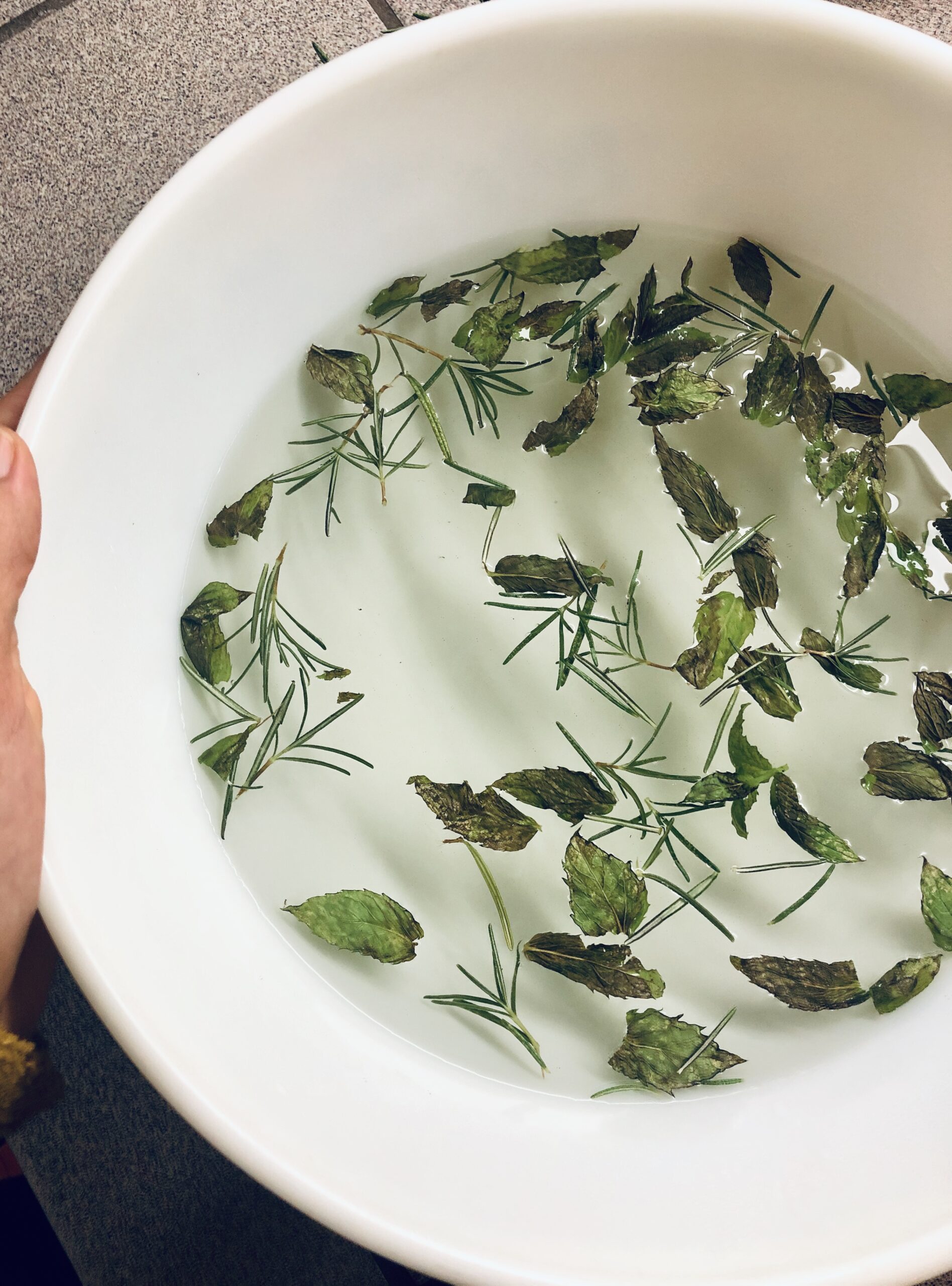The skies in the Pacific Northwest have been filled with dense smoke due to the wildfires and as a result the air quality in Portland and its surroundings is unhealthy. People are staying inside to protect their lungs. We need to do the best we can to keep our bodily systems working appropiately. In Ayurveda, this is connected to keeping a harmonious energy in the physical and energetic body.
In this blog post, I’ll be sharing with you one of my favorite Ayurvedic self-care practices for connecting to the breath and improving breath capacity. Herbal Steams or “Swedhana”, this holistic self-care practice nurtures and warms the tissues of the scalp, eyes, and jaw; calms the mind and soothes the body; it can also help break a sweat to release toxins and it supports lymphatic drainage in the neck.
Making an herbal steam is very simple, but before we dive into the process let me add a little note on Ayurvedic wisdom and the elements of nature. Ayurveda recognizes that the elements of nature – ether, air, fire, earth and water – are also present in the human body. Each of these elements have different qualities or gunas, for example, fire is hot, sharp, penetrating, oily, light, liquid, mobile. These qualities contain potential information and energy that serve as a means to understand from a holistic perspective how the elements of nature interact and manifest in mind body system. For instance, healthy fire is good assimilation and absorption of nutrients, and being able to digest life experiences.
Qualities like dry, dispersing, heavy, rough, cloudy, among others are in the air we are breathing in right now. Mind and Body need the opposite of that. Think grounding, hydration and nourishment. Incorporating herbal steam into your daily routine these days is a lovely way to call in those qualities and attend the needs of the moment, like remembering to breathe!
Alright, let’s get ready to do an herbal steam. Here’s what you’ll need: a bowl or large soup pot, water, herbs or seeds or barks or flowers, and a towel.
I suggest before you make the trip to your favorite herb store that you check what you have available in your kitchen and/or your backyard. Let’s keep in mind what my Ayurveda teacher says “use what you have at your disposal and get playful with your medicine”.
How to make an herbal steam?
1- Fill your bowl or pot with hot water
2- Add your choice of herbs, flowers, dried seeds, barks or any roots. Note: if using seeds, barks or roots, they will need to be boiled and simmered. Leaves and flowers will be added last and kept covered before doing herbal steam.
3- Once you have that ready, place your bowl or pot on a table and sit in front of it. Cover your head with your towel (make sure the back of your neck gets covered). Remove the lid and breathe the steam in and out for about eight to ten minutes or as desired. Take breaks here and there. If needed, feel free to add cool or more hot water to your medicine.
The moment you start breathing the steam in and out, begin to notice any physical sensations and the movement of the breath in and out of your nose. Oftentimes, I like to place my hands in my belly and rib cage, and visualize how the rib cage is being moved by the breath like an accordion, every inhale the folds of the accordion open, creating space and a sense of expansion, and every exhale the folds of the accordion close, and I release. Feel free to add this imagery to your practice or find new ones, and remember to keep on breathing!
I’ve been using rosemary and mint at home. Both are great allies for shaking out stagnation and getting things to move; they are gently stimulating and relaxing, AND they smell amazing!
I hope this Ayurvedic self-care practice helps you cultivate a deeper and richer breath. Reach out if you have questions. Stay safe, friends. If you’re interested in diving deeper into the energetics of the herbs through the lenses of Ayurveda, I’d recommend checking out Dr. Vasad Lad’s and David Frawley’s book “The yoga of herbs”.


